- Qualcomm Launches Snapdragon 4 Gen 2 Mobile Platform
- AMD Launches Ryzen PRO 7000 Series Mobile & Desktop Platform
- Intel Launches Sleek Single-Slot Arc Pro A60 Workstation Graphics Card
- NVIDIA Announces Latest Ada Lovelace Additions: GeForce RTX 4060 Ti & RTX 4060
- Maxon Redshift With AMD Radeon GPU Rendering Support Now Available
Content and news by Rob Williams

Rob's Recent Content
Palm to Close All Retail Outlets
Things have not been looking too great for Palm the past few months, and many are questioning their future. Over the course of the last few years, they’ve had a class-action lawsuit filed against them for accident-prone Treo 600/650’s, then last year we saw a Foleo created and canceled, and most recently, the long-anticipated Linux-based OS was pushed back by an entire year.
As if things needed to go worse, Palm has made known that they will be closing all of their retail locations before the quarter is through. According to CNet, the news might be the result of the class-action lawsuit that’s draining their funds, but Palm makes no real connection. Instead, they explain the need to place resources elsewhere, in order to create world-class products. Whatever the reason, I hope to see Palm pull themselves out of this situation they’ve found themselves in.

|
Palm announced on Wednesday that Treo 600 and 650 owners who have had their units replaced or repaired at least twice are eligible for cash rebates on new Palm smartphones, as part of a settlement of a class-action suit filed in 2005. The company will also repair any Treo 600 or 650 that hasn’t failed twice, but is outside of the original warranty.
Source: One More Thing Blog
Published on January 25, 2008Should We Care About Window 7’s Release Date?
Despite the fact that Windows Vista was just launched (almost exactly) one year ago, there has been a lot of Windows 7 talk recently. There have even been “leaked” screenshots, such as the ones found on this Chinese blog. If you take a look there, you will notice one thing… the screenshots don’t look like a Windows 7, but rather a Photoshop’d Windows Vista. That means two things.. it really is Photoshop’d, or it currently shows no differences or is rough around the edges simply because it’s a pre-alpha.
Having tested Windows Longhorn (pre-Vista), I remember the same thing occurred. At first, the OS looked exactly like Windows XP, with a different color theme. So that could be the case here… maybe they are just early screenshots. That doesn’t speak to what’s behind the scenes though, as that could be a completely different story.
Regardless, the question is, do we, or should we, care? Personal gripes aside, Vista hasn’t exactly been well-received due to blatant issues that remained after the beta, some of which Service Pack 1 should take care of. Still, with a reported launch date of late 2009 (this should be taken with 1/4th of a grain of salt) for Windows 7, no one should be looking forward to it. Vista has enough remaining issues of its own, to think of its successor in less than two years is a little… asinine.
As Ars Technica points out, Microsoft’s time lines haven’t worked out in the past (Vista should have been out in 2005, instead it was launched late 2006), but most importantly, we need Microsoft to take their time and not rush the next version. Whether they screwed up on Vista is an issue to be argued, but the fact of the matter is, it didn’t sell as well as they expected it to. Windows 7 should be where Microsoft turns a new leaf and gives us a well-tested and refined OS.
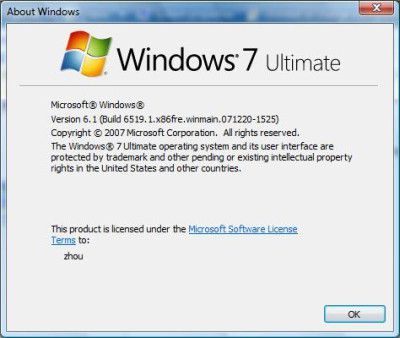
|
Unfortunately, Vista did become date-driven, and even Gates seemed to admit that Vista shipped before it was ready when Gizmodo talked to him at CES this year. Admission or not, it’s quite clear that things that were not “totally together” where included on the “shipping train,” and that the departure time became more important than the quality of the release.
Source: Ars Technica
Published on January 25, 2008Microsoft Finally Turns a Profit with Xbox
Ahh, the Xbox 360. It’s hard to believe it’s already been just over two years since the console has first launched, but it’s true. It’s also true that it took that long for Microsoft to turn a simple profit. Incredible. Until now, they’ve been losing money on each sale, leveraging their debt with game and accessory sales, but now might be the time when Xbox debt will be no longer.
According to their second quarter earnings, a lot of the profit was helped by Halo 3 game sales and resulting console sales, on top of lower production costs and decreased marketing (since it’s already well-established). When younger, I never imagined Microsoft would have a console, but I’d have to say if I could choose only one of the current offerings, it would have to be the Xbox. Though, maybe some of this profit could go towards fixing up Xbox Live’s downtime issues to make sure they don’t come back?

|
The 6.1 million Xbox 360 consoles and 4.82 million copies of Halo 3 sold in the first half of fiscal ’08 sure helped, but so did “decreased Xbox 360 manufacturing costs” and “a decline in Xbox 360 platform marketing expenses” – it’s costing less to build them and less to promote the brand.
Source: Joystiq
Published on January 25, 2008Harsh Lessons in Overreacting
I’ve been known to overreact and jump to conclusions in the past, but Marie Lupe Cooley takes everything to a new level. When she saw a help wanted ad in a newspaper that looked similar to her current position, she assumed she was soon to be sacked. Of course, the most reasonable reaction to this was to delete $2.5 million worth of company data, including drawings and blueprints.
Once said and done, it turns out she wasn’t going to be fired, and the position was for her bosses wife’s business. Ouch. Not surprisingly, she’s now out of a job, which is actually rather mild for what she did. I still have to ask… why wasn’t all this data backed up in the first place? The boss was lucky enough to be able to get it all back via expensive means, but a backup would have prevented any of it from happening in the first place.

|
So, police say, she went to the architectural office where she works late Sunday night and erased 7 years’ worth of drawings and blueprints, estimated to be worth $2.5 million. “She decided to mess up everything for everybody,” Jacksonville Sheriff’s Office spokesman Ken Jefferson told reporters. “She just sabotaged the entire business, thinking she was going to get axed.”
Source: Fox News
Published on January 25, 2008KDE Desktop Environment Heading to Windows
Earlier, I posted my experiences with the ASUS Xonar audio card in Linux, and to continue with that theme, Ars Technica has a first-look at the KDE desktop environment, which will soon be available for all Windows users. This to me, is a great thing. KDE is a well-designed environment and happens to be the one I use daily. However, I admit it feels odd to see KDE’s applications running in Windows… never thought that would happen!
Although there is a current Alpha available, it should be tested by those who are willing to delve deep within their Windows’ system files… it’s not a straight-forward installation. But judging by the article, the environment has sure come a long way and is rapidly improving. I admit though, I like KDE for Linux, but I am not sure I’d be just as pleased with it on Windows. It’s hard to say without first trying it, however. I am looking forward to seeing this progress. If you happen to feel brave enough to test it out for yourself, head here.
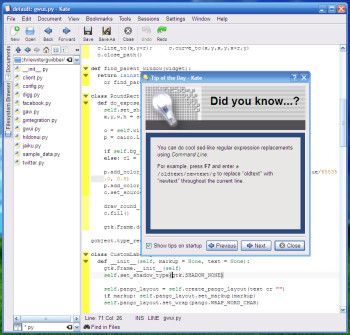 Credit: Ars Technica |
My basic KDE installation on Windows used about 600MB and included the KDE games collection as well as the core applications and libraries. Major applications are mostly functional with only minor rendering glitches and a few remaining platform-related bugs. When I tested the Windows port of the Konqueror web browser, I noted many serious HTML rendering bugs, but the user interface worked flawlessly.
Source: Ars Technica
Published on January 24, 2008ASUS Xonar Under Linux – Does it Work?
After reading Rory’s review of the ASUS Xonar D2 back in September, I knew this card was one I had to have in my possession. For the past two years, I have been using the Chaintech AV-710 and certainly got my use out of it, but I knew it was time for an upgrade, especially since I planned on purchasing a decent pair of headphones. The only problem was… I am a pure Linux user, using Windows only for gaming, Photoshop and the like. To my surprise though, I was not out of luck.
Thanks to dedicated developer Clemens Ladisch, a CMI8788 driver has been in development for quite a few months. For those unaware, the C-Media 8788 chipset is also found in the Auzentech X-Meridian, HT Omega Claro, Razer Barracuda AC-1, Sondigo Inferno and of course, both the ASUS Xonar D2 and D2X.
I installed the D2X a few weeks ago and installation went fine. I posted in the forums at that time, relaying my experiences. First and foremost, I do notice quite a sound difference… and I’m not close to being an audiophile. You’d have to be half-deaf to not hear the difference, even with the rather cheap headphones I’m currently using.
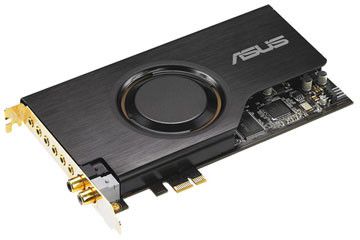
|
The biggest gripe I’ve run into is the lack of volume sliders… I have a single Master and that’s it. I am certainly not complaining, though. The driver has certainly come a long way in the past few months and is completely usable.
I am interested in hearing experiences if anyone else out there has a CMI8788-based audio card and has it working fine in Linux. From what I gather, I am in the minority when it comes to the volume sliders, so chances are you will have better luck. I’ll follow-up in a few weeks if things improve. As it stands, I have to recommend this card… the sound… is so… good.
Source: Related Forum Thread
Published on January 24, 2008AGEIA Not Acquired, After All
We linked to a rumor yesterday, one that claimed AGEIA had been acquired. Not surprisingly, it has already been debunked. According to X-bit labs, AGEIA is denying any acquisition and boldly states that they have a road map in place and plan to follow it.
AGEIA is currently owned by a conglomerate of venture capitalists, and a sale doesn’t seem to make sense right now. But is that the case? AGEIA seems to be in a prime position for being acquired, especially since Intel took in Havok under its arms. Of course, maybe AGEIA has more to prove, more in store to help drive up their value. Perhaps no sale is in place now, but it would be hard to believe if something doesn’t happen within the next year.

|
Currently Ageia is owned by a group of investors, including Apex Venture Partners, BA Venture Partners, HIG Ventures, Granite Global Ventures, CID Equity Partners, and VentureTech Alliance. Typically such companies are interested in either selling their startups to others, or making them public. However, this time Ageia denies any ownership change.
Source: X-bit labs
Published on January 24, 2008DisplayLink – Multi-Display Setups with USB
In a world where multi-tasking is a necessity, multi-display configurations are becoming ever more popular. DisplayLink is a new kind of technology that promises to take the hassle out of adding additional displays to your PC – even six is possible. Best of all, you don’t need a second GPU.
Published on January 24, 2008DDR3 Price Premium to Shrink to 10% in 2H
When Intel launched their P31 chipset last May, it was a definite step forward. The chipset itself brought some great new features to the table, and performed extremely well. It still retains its spot as one of the best chipsets available today. The most notable addition though, was DDR3 support. Coincidentally, that proved to be the least favored feature of the new chipset, all thanks to the insane module prices.
At that time, a moderate 2GB DDR3 would have cost at least $500, and while it’s decreased in price somewhat, today’s 2GB performance kits still retail for $400 – $500. Compare that to a 4GB DDR2 kit that retails for $150… or less. It’s easy to see why DDR3 hasn’t caught on. But to much chagrin, Intel’s next chipset, X48, will be DDR3 only. At first it might seem like a bad thing, but it’s a good thing for those who don’t plan to purchase. The quicker X48 comes to market, the more DDR3 adoption there will be… the faster the prices will go down. Like most things, we just need to sit back and wait.

|
The DRAM makers expect some PC vendors will be subsidized by Intel to migrate to DDR3-based platforms, and this should help encourage the entire industry to migrate accordingly. They noted that some PC vendors will only introduce DDR3-based systems in the second half of the year. About 30% of new PCs shipping worldwide will be powered by DDR3 in the fourth quarter of 2008, they estimated.
Source: DigiTimes
Published on January 24, 2008Game Developers Choice Award Nominees Listed
I am not an awards buff… and gaming awards are no exception. If I like a game, then good… I don’t care if it gets an award or not. But I could be a hypocrite, because I am somehow intrigued by awards for games voted on by game developers themselves. That tends to mean one thing… the results are truly deserving. Or, there is a lot of ass-kissing going on in the game industry.
There are a total of ten categories, including Best Visual Art, Best Debut and of course, the Game of the Year. This years nominees for GotY is BioShock, Call of Duty 4, Portal, Rock Band and Super Mario Galaxy. All of those are great titles… but I am quite sure Portal has an amazing chance of walking away with the award. The winners will be announced during the Game Developers Conference in San Francisco late next month. We’ll be there, and will post the results once available.

|
Valve’s Portal and 2K Boston/Australia’s BioShock lead the nominees for the eighth annual Game Developers Choice Awards with five nominations each, including the coveted Game of the Year title, organizers have announced. The Game of the Year category also includes Infinity Ward’s Call of Duty 4, which follows with four nominations and, with both games receiving two nominations each, Harmonix’s Rock Band and Nintendo’s Super Mario Galaxy.
Source: Game Choice Awards, Via: Joystiq
Published on January 24, 2008Rumor: AGEIA Could Have Been Acquired
Since AGEIA’s PhysX PPU first hit the market, there was instant speculation with regards to how quick they’d be acquired, any by whom. After all, it would be a mighty challenge to develop, market and sell dedicated PPU units by the lonesome. Back in November, AMD’s Richard Huddy mentioned that they’d consider a purchase… if the price were right and, you know, they actually had the money to do so. But despite AMD’s finances, a purchase would have actually made a lot of sense, if only to combat the recent purchase of software-based Havok, made by Intel.
The rumors haven’t really stopped since then, and Fudo has now kick-started the mill with a hunch that AGEIA has just been acquired, but by who, no one knows. He does mention, however, that it’s most certainly not AMD, but could either be Intel, NVIDIA, or another potential buyer with deep pockets.

|
If in the wee chance it happens to be Intel, then they have bought themselves into instant domination, since there is no real competition in the hardware or software physics world. Havok, AGEIA and Larrabee all under one roof would put them in an incredible spot to meld future game development. NVIDIA would be another likely candidate, however. AGEIA’s assets would fit well with their Tesla platform, and eventually, their consumer graphic cards. Even if AGEIA has not been purchased, I think many will agree that it’s only a matter of time.
Source: Fudzilla
Published on January 23, 2008Microsoft Changes Mind on Vista Virtualization, All Versions Now Allowed
You might recall during Vista’s launch last January that many were upset due to the license not allowing virtualization on non-Business/Ultimate versions of the OS. Of course there was no need for this, and rather, it was a cheap ploy to have people purchase the larger versions. There’s no denying that. Somehow Microsoft has had a change of heart, and the license how now been changed to allow all versions of Vista to be virtualized.
This rule will no doubt apply most to Mac users who yearn to run a version of Vista through Parallels of VMWare, which is now a more tempting option since they don’t have to run out to purchase a scaled-back Business version or incredibly expensive Ultimate version. I would be very curious to see what kind of speeds would be achieved with Vista through virtualization though. I have a rough time having it run fast natively, I am not too sure I want to test out a VM.

|
Microsoft reportedly intended to allow all versions of Vista to be virtualized from the start, but something made it change its mind last year. Microsoft’s Server Infrastructure General Manager Larry Orecklin told eWeek yesterday that customer interest for virtualization has increased over the past six months, adding, “We think the market is now ready for this.”
Source: TechReport
Published on January 23, 2008ATI FireGL V8650 versus NVIDIA QuadroFX 5600
Despite the fact that workstation cards are useless to us gamers, it doesn’t even matter. The way we admire these cards can be compared to how we’d admire a fancy exotic car, with jaw dropped and wallets sobbing. Believe it or not though, some people actually need such cards, including CAD designers, 3D modelers, science labs, game developers, people with low self-esteem… the list goes on.
HotHardware has taken the top cards from both sides of the fence, ATI’s FireGL V8650 and NVIDIA’s QuadroFX 5600, and did what anyone should do if equipped with both… find out which is better! Sadly, there is no solid conclusion even after all of the tests, but ATI’s 2GB card really does excel where huge memory is needed, although NVIDIA’s card proved to be a better overall offering… and it’s a few hundred dollars cheaper in the process.
 Source: HotHardware |
The V8650 is a monster version of ATI’s R600 graphics processor with 2GB of frame buffer memory attached. The Quadro FX 5600 is the 1.5GB heavyweight workstation cousin of the GeForce 8800 Ultra, both of which use NVIDIA’s powerful G80 processor. Both cards are phenomenally large, as well. As you can see above, this is going to be interesting.
Source: HotHardware
Published on January 23, 2008World of Warcraft Reaches 10 Million Addicts Subscribers
In March of 2005, World of Warcraft hit a staggering 1.5 million subscribers, and in December of the same year, it skyrocketed up to 5 million. Since then, things have begun to slow, not surprisingly, and it took another year and a half to finally reach 9 million. Fast-forward another six months, and the popular MMO has finally hit 10 million total subscribers. I don’t play the game and haven’t touched it since alpha, but there is no denying just how impressive this feat is.
One has to be curious though, with regards to how many players hold more than one account. In any MMO, it’s not uncommon for a dedicated player to own two, three or even more accounts at any given time. Blizzard has no reason to care about that though, since they are still being paid for all ten million accounts. What a great monthly paycheck that is!

|
Aside from World of Warcraft’s apparent competence at delivering the MMO experience, part of its success stems from its worldwide availability. World of Warcraft is currently supported in North America, Europe, China, Korea, Australia, New Zealand, Singapore, Thailand, Malaysia, Taiwan, Hong Kong and Macau. Furthermore, the game is currently available in seven languages, with a Russian version in development and scheduled for release later this year.
Source: DailyTech
Published on January 23, 2008HD DVD Hardware Sales Suffer Huge Decline Since CES
As sad as it may be for some people, the demise of HD DVD is becoming ever-clearer. Just yesterday, we posted about a petition that’s going on, regarding Warner’s decision to pull-out of the HD DVD camp. Since then, the total signatures have jumped up around 60% to 16,000, but the formats remaining fans may not be enough to save this battle.
According to the NPD research group, Blu-ray hardware has far surpassed sales of HD DVD hardware in the past few weeks. Prior to CES earlier this month, HD DVD held 48.83% of the hardware market, but since then, that number has decreased to a mere 7.47%. Ouch… there is no appropriate word for such a situation. Even with so many dual-format readers being sold, if HD DVD continues this quick decline, it won’t be long before the remaining supporters consider their options.
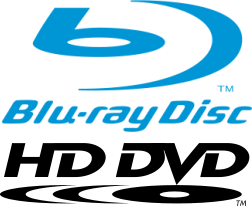
|
The sudden shift is credited almost exclusively to Warner, whose decision to drop HD DVD releases will place more than 70 percent of all HD movies in the Blu-ray format when the switch takes effect in June. A number of retailers have already announced retail plans to scale back HD DVD shelf space or introduce HD to stores only in Blu-ray format since the Warner announcement.
Source: Electronista
Published on January 23, 2008Ten 1000W Power Supplies Put to the Test
Building a brand-new machine? Somewhat of a performance-hound? Looking to increase the size of your ego? Then you might very well need a power supply that delivers at least 1000W worth of monstrous power. But, the most common problem arises when you decide such a thing… which to buy? X-bit labs hopes to help with this conundrum by pitting ten popular models against each other.
Surprisingly, PCP&C is absent, as is OCZ, however Antec, Enermax, FSP and other popular favorites have made the list. As is becoming increasingly common though, some of the power supplies didn’t fare well, and couldn’t even be recommended, such as FSP’s Epsilon, thanks to its high-voltage ripple. Antec and Enermax performed quite well, but Oleg notes that none of the PSUs tested out-performed the CM Real Power Pro he reviewed prior in terms of stable operation and low-noise levels.

|
PSU manufacturers go on pumping up the capacity of their products and I now have the test results of models with a wattage rating up to 1500W. My job is to test, and it’s up to you to decide if your PC really needs that much power. I can only tell you one funny thing: the combined wattage of all the PSUs tested for this review exceeds 10 thousand watts!
Source: X-bit labs
Published on January 22, 2008“Save HD DVD” Petition Alive and Well
They say that the early-bird catches the worm, but that might not be the case for Toshiba. Despite coming to market with their HD DVD format three months before Sony’s Blu-ray, many believe that the format is now en route to death. Much of this has to do with the recent news that Warner Brothers is abandoning HD DVD for Blu-ray, and there is no mistaking it… that was a huge blow.
Well, depending on who you ask, this is either a good thing or a bad thing. For HD DVD fans, it’s truly ridiculous and unfair. Some fans are so bummed about Warner’s recent decision, that they’ve created a petition pleading with them to reverse their decision. So far, the support has been fantastic, with well over 10,000 signatures added to the pile. What if you hate HD DVD? Don’t stress, there’s a petition for you as well.
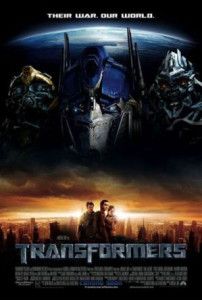
|
HD-DVD is more alive than ever, with cheaper hardware prices, and better technological capabilities, both of which are better for the consumer. I guess Warner feel higher prices and less features are better. The only thing Blu-Ray has going for it is 20GB of extra storage space, and a big name like Sony backing it up. HD-DVD on the other hand has PIP, web-enabled features, in movie menus, and much more. And if extra space is needed, use another disc, big deal.
Source: Save HD DVD Petition, Via: High-Def Digest
Published on January 22, 2008Privacy Commissioner of Canada Speaks Up Against DRM
Just one week after the proposed “iPod tax” was dropped, Jennifer Stoddart, the Privacy Commissioner of Canada, speaks up loudly regarding her concerns for DRM. This comes at a perfect time, as a bill that would have pushed DRM to the limelight continues to be pushed back, essentially allowing more time for such arguments.
Stoddart’s concerns revolve around privacy, not the fact that content providers want to protect their product. In her public letter, she made mention of the Sony BMG fiasco that contained a severe privacy breach, and she, along with many of us, don’t want to see something like that happen again. It’s great to finally see someone with authority speaking up and providing valid concerns. If something is to make a dent in the case, this might be it.

|
Stoddart points to the Sony BMG rootkit fiasco as a real-world example of the problem. The Windows-only content protection software included on selected CDs cloaked its presence, collected information about what discs were played, and sent the data (and a user’s IP number) to Sony BMG. That made the software a privacy concern, not just something for IP lawyers to debate. “That this occurs when individuals are engaged in a private activity in their homes or other places where they have a high expectation of privacy exacerbates the intrusiveness of the collection,” Stoddart wrote.
Source: Ars Technica
Published on January 22, 2008Seagate (Finally) Unveils Momentus 5400.4 250GB Mobile Drive
Seagate issued a press release yesterday announcing their new 250GB 2.5″ drive, which led many to ask the question, “why?”, and that’s a valid one. Many other companies have already released 250GB drives, so what took one of the world-leaders in storage so long to release their own? During a phone-conversation last month, the simple answer I was told was, “we wanted to make sure we released the best drive on the market.”, which they well could have. We won’t know until reviews surface.
Introduced with the new drive is PMR 2.0 (Perpendicular Magnetic Recording), which is essentially a refinement of the original technology, so no new major features have been introduced. The Momentus 5400.4 drive includes two platters of 125GB each, 8MB of cache and S-ATA 3Gb/s speeds, making this only the second 250GB mobile drive on the market to support such speeds (Toshiba has the other).
Seagate claims to have the best 250GB on the market, and according to their internal testing, that seems to be the case. Where PC Mark 04’s HDD test is concerned, Seagate’s Momentus 5400.4 is above the rest, although its power in watts fell slightly behind Hitachi’s drive of similar specs. Pricing for the new drive is not yet known, but it’s expected to debut at around the $150 price range, alongside Toshiba’s S-ATA 3Gb/s offering.
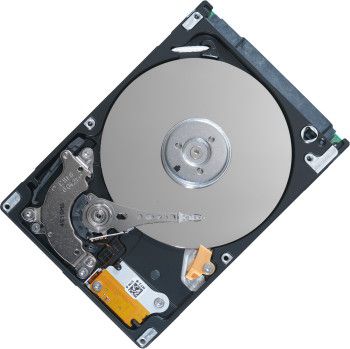
|
The Momentus 5400.4 hard drive is perfect for mainstream laptops, performance-hungry gaming systems, workstations and personal external storage. The 2.5-inch, 5400-rpm giant features 250GB of capacity on just two disc platters and, like the rest of the Momentus series, is lean on power consumption, allowing notebook users to work longer between battery charges. And the drive is virtually inaudible thanks to Seagate’s innovative SoftSonic fluid-dynamic bearing motors and QuietStep ramp load technology.
Source: Seagate Press Release
Published on January 22, 2008NVIDIA GeForce 9600GT Out in the Wild, Doubles Performance of 8600GT
With G94 due next month, it’s almost a surprise that it took this long for “leaked” benchmarks to roll in, but in all honesty, I think it was worth the wait. According to Chinese website PC Online, the upcoming 9600GT is set out to put the 8600GT to absolute shame, and the numbers are here to back that up.
The new card will be equipped with 64 stream processors, up from 32 on the 8600GT, and the memory interface has been bumped up to 256-Bit, which in itself should result in light/day comparisons to it’s predecessor. Memory keeps at 512MB, but core and memory clocks are increased to 650MHz and 1800MHz, respectively.
Depending on pricing, this card is going to prove to be a good choice for most anyone. It’s specs are close to the higher-end current-gen (soon to be last-gen) cards, so it’s really hard to go wrong. Whether or not the cards will be priced similarly to current 8600GTs is yet to be seen, but it would not be a surprise to see the price hiked to reflect the far improved performance.

|
PC Online was able to measure the performance of the 9600GT and the results confirmed NVIDIA’s claims of a 100% performance increase over the 8600 series for the most part. The 9600GT reached an overall score of 10813 while the 8600GTS and 8800GS had scores of 6251 and 10391, respectively.
Source: DailyTech
Published on January 22, 2008Older Entries
Newer Entries
Copyright © 2005-2025 Techgage Networks - All Rights Reserved.
About Us | Advertise | Terms & Conditions | Privacy Policy




